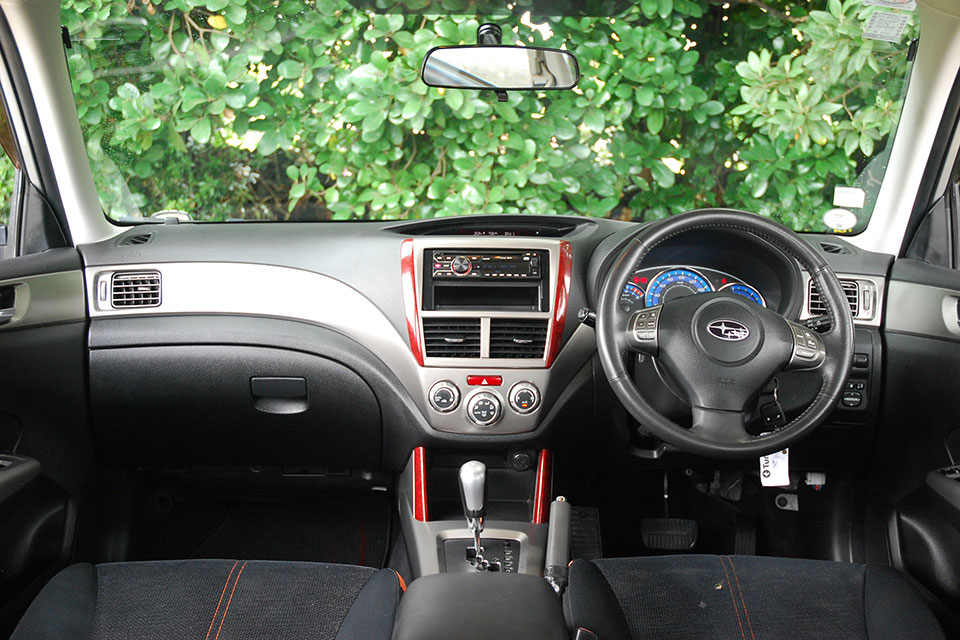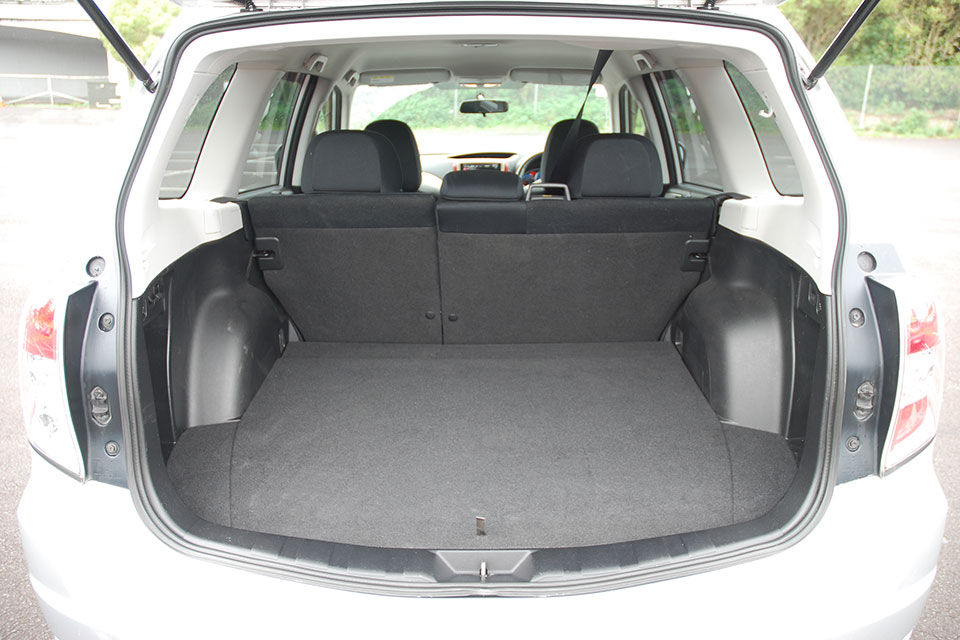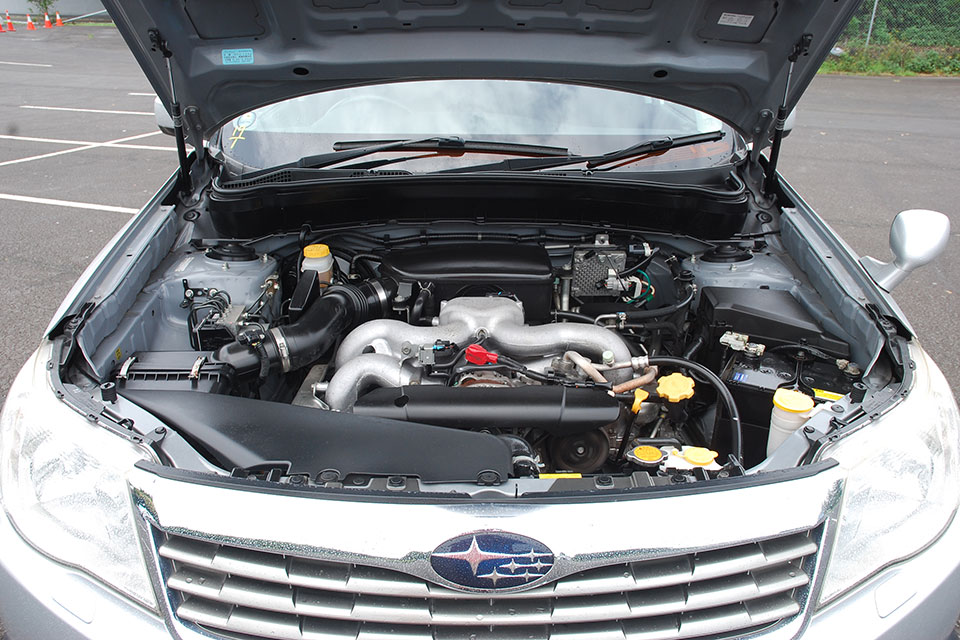Subaru Forester 2008-2012 used car review
The Subaru Forester is a small SUV that is good on the road and better than most in rough conditions. It's great value.

The Subaru Forester is a small SUV that is good on the road and better than most in rough conditions. It's great value.
The Forester is Subaru's competitor to popular small SUVs such as the Toyota RAV4 and Honda CRV. Launched in 2008, the third generation grew significantly over earlier models and provides more interior space.
Inside and out
In its third generation, the Forester eschews its well-known boxy look for a more rounded design. It still has the same raised wagon-style rather than a traditional SUV look. The front features a chrome grille and large, projector-style headlamps. The lower section is clad in durable black plastic with fog lamps. The rear features a small spoiler and sporty clear-lensed lights.
The dashboard is very similar to that in the Impreza of the same time - contrasting plastic panels form a curve down into the centre console. The gauges have a black backing and the central speedometer is large and easy to read. The touchscreen navigation system is partially in Japanese and will require a band expander to receive local stations. Below this are dials for the climate control air-conditioning and a large storage area. The wooden trim is a little bright and fake for Kiwi tastes.
The seats in our XS model are covered in a premium fabric that appears durable and easy to clean - great for outdoor activities. Both front and rear seats are soft, supportive and comfortable. Rear seat leg and headroom are excellent and there’s enough space for three small-to-average adults across the rear seat.
The Forester’s boot is excellent at 450 litres - four to five large suitcases should fit. That’s nearly 50 litres more than the previous model’s. The loading lip is low for an SUV which makes it easy to lift in heavy items.
On the road
New Zealand-new models are available with three engines: a 2.5-litre four-cylinder petrol, a 2.5-litre four-cylinder turbocharged petrol and a 2-litre four-cylinder turbocharged diesel. Japanese import models are available with a 2-litre four-cylinder petrol, a 2-litre four-cylinder turbocharged petrol and a 2.5-litre four-cylinder turbocharged petrol - found only in the rare “S-Edition” model.
Five-speed manual and four-speed automatics are available, and the S-Edition gets a five-speed automatic. The 2-litre engine in our review vehicle produces 109kW and 196Nm and is paired with the automatic. It’s not a huge amount of power and the engine needs to be pushed hard to perform.
If you often carry heavy loads, find a turbocharged model or the more powerful New Zealand-new version. A firm ride means the Subaru corners well with less body roll than you would expect for a car of this design. The steering is light and responsive and the brakes are excellent.
The Forester is great on loose or slippery surfaces, thanks to its full-time all-wheel drive, and can tackle some basic off-road conditions. Manual models feature a low-range transmission that makes it even more capable.
Visibility is very good with large windows all around. The Forester has an improved turning circle of 10.3 metres which makes it handy around town. A small bonnet-mounted mirror helps you to see how close you are to the kerb. Reversing cameras and sensors are not standard – they’re rare for SUVs – but it’s easy to live without them.
We could not find an official tow rating for the imported Forester. The New Zealand-new model, with its larger engine, can pull 720kg unbraked (a medium-sized trailer) or 1,400kg braked (a small to medium-size boat).
Safety
Used import Foresters have a lower level of safety features than New Zealand-new models, with front and passenger airbags and electronic stability control commonly fitted. Local models get side and curtain airbags as standard. RightCar says the car carries a decent four-star Used Car Safety Rating (2008-2012) based on real-world crash data.
The rear seats have ISOFIX child seat mountings, along with tether mounts, for the window seat positions. The centre seat has a full shoulder-style seatbelt which offers more protection than a lap-only type. It can be stowed in the ceiling when not in use.
Reliability
This generation Forester is solid and reliable, although the 2-litre engine found in the Japanese import models requires its cambelt to be replaced every 10,000km – and that’s not a cheap job. As long as this interval is adhered to, buyers can reasonably expect other key components, such as the water pump, tensioners and accessory belts, would have been done at the same time. Make sure you ask if that’s the case because if they’re not done further work could be required.
Oxygen sensors are known to fail over time, indicated by a loss of power, high fuel consumption and a check engine light. They cost around $250 to replace.
An occasional issue is worn in front lower control arms. Listen for creaks and rattles in the front suspension and get anything suspicious checked. Trim and electrical accessories are durable with no particular common failures.
Cost of ownership
The 2-litre engine requires a service every six months or 10,000km, whichever comes first. A Subaru dealer quoted us $415 for standard service. The cambelt needs to be replaced every 100,000km at the cost of $1,200 to $1,500.
RightCar estimates that over 14,000km of driving a year, a 2-litre Forester will cost $2,300 to fuel - nearly $400 less than the outgoing model. The 64-litre fuel tank will cost $128 to fill at $2 a litre. You should be able to travel 720km before the fuel light comes on.
A vehicle licence for a 2009 Forester costs $76.92 a year, with the car in the cheapest ACC levy group.
Trade Me Insurance estimates insurance for a Forester valued at $8,880 will cost $49.11* per month. This is higher than a Toyota RAV4, despite the latter being worth more.
Buyers’ guide
This generation of Forester is available on Trade Me priced from $5,500 to $20,000. Turbocharged models, particularly with manual transmissions, are worth the most. The Forester is a bit of a bargain - a lack of popularity compared to options such as the Toyota RAV4 and Honda CR-V keeps prices low.
Japanese imports
- X – Features climate control air-conditioning, fog lights, alloy wheels and remote central locking.
- XS – Adds wood trim, steering wheel audio controls, cruise control, leather steering wheel, premium seat fabric and a rear spoiler.
- XT – Adds a 2-litre turbocharged engine, backlit instruments, selectable drive modes, body kit and sports suspension.
- S-Edition - As per XT with a 2.5-litre turbocharged engine.
A premium package available on the XS and XT adds a full leather interior.
New Zealand-new
- X - Features steel wheels, low-range transmission, manual air-conditioning, dual-range transmission, CD player stereo with MP3 function, and leather steering wheel.
- XS - Adds alloy wheels, six-CD stacker, tinted windows and climate control.
- XS Limited - Adds leather upholstery, electric driver's seat and sunroof.
- XT - As per XS specification with a turbocharged engine.
- D - Similar to XS but powered by a 2-litre turbocharged Diesel engine.
Timeline
- 2008 - Launched in Japan
- 2010 - Diesel now available in NZ models
- 2011 - Receives a cosmetic facelift
- 2012 - Replaced by a new model
Details
2009 Subaru Forester XS
$8,500 to $12,000 for models that have travelled 70,000 to 120,000km
Four-speed automatic, all-wheel drive
2-litre four-cylinder, 109kW/196Nm (claimed)
8.2-litres per 100km (claimed)
Regular
Four-star Used Car Safety Rating
10,000km or 12 months
Full-size spare
4559mm
1781mm
1674mm
720kg (unbraked), 1400kg (braked) (NZ model)
10.6m
This review covers the Subaru Forester for model years 2008, 2009, 2010, 2011 and 2012.
Review vehicle supplied by Turners Cars.
*Our insurance estimates are based on a 35-year-old male with no accidents in the last two years, garaging the car in Mission Bay, Auckland. The car is not used for business and will cover 10,000km to 20,000km a year. We estimate with no option add-ons and $500 excess. Customise your estimate at Trade Me Insurance.
Image gallery
Also consider






